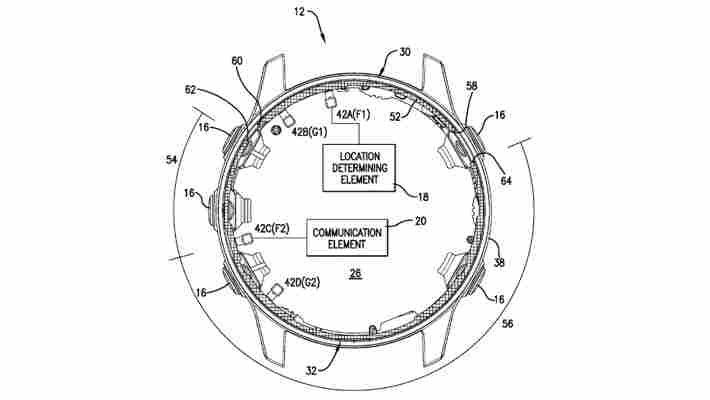It’s been a long wait, but variable refresh rate (VRR, for short) has finally arrived on PS5. Helping to eliminate screen tearing and boost performance on 120Hz displays, Sony confirmed that numerous heavy hitters are being patched to support VRR optimization, including Insomniac Games Spider-Man titles and Capcom's Resident Evil Village.
However, you’ll need a compatible TV or monitor to utilize PS5 VRR . It’s true Sony TVs got VRR support last month, though not every 120Hz set supports this newest feature. Thankfully, one Reddit user, u/RTCanada , has begun compiling a list of compatible devices on r/PS5 with the wider community.
To check it’s working, they advise either using a ‘live FPS ticker’ that certain TVs and monitors have or alternatively, using ‘Video Output Information’ within the PS5's 'Screen & Video Settings’.
Some sets have certain caveats or require settings changes, and we've seen conflicting reports about VRR support, so we’d highly advise checking that list too. Many Samsung models listed below require you to either turn on Ultimate FreeSync mode or don’t confirm VRR support is active, while several Sony models turn off local dimming.
With that in mind, here’s a list of which TVs and monitors are currently confirmed, broken down by manufacturer:

How To Turn On PS5 VRR
As there’s no downloadable system update required, VRR should appear in your PS5's settings once you've restarted your console. Head to Settings > Video Output > Screen and Video, and you’ll find a new section called 'VRR'.
Sony previously outlined several big hitters are getting supported on PS5 , and you can find that full list below:
Otherwise, VRR can be applied to unsupported PS5 games , though there may be unintended consequences, so you can always turn that off.
Naturally, these titles won’t benefit like those which have been specifically optimized. However, as pointed out on the Reddit list , there’s still a noticeable performance improvement for games like Elden Ring , Cyberpunk 2077, and Tales of Arise.
Google teams up with Coursera to help boost your cloud skills
If you’ve been looking to improve your cloud computing skills, you’re in luck as Coursera has announced that more than 500 cloud-focused projects from Google Cloud are now available on its online course site .
At a time when business leaders have prioritized cloud computing , organizations are eager to find talent with the right cloud skills across a number of different roles and departments to fill a variety of positions.
These new Google Cloud projects on Coursera aim to provide employees looking to bolster their resumes and job seekers with new cloud skills in a flexible, bite-sized format. These projects, which range from beginner to advanced, can be completed in anywhere from 30 minutes to a couple of hours and feature hands-on, expert-led instruction using real cloud production tools and access to other Google Cloud projects.

Hands-on learning projects
While all of Google Cloud’s new projects on Coursera are included with the platform’s business, campus and government plans as well as with a Coursera Plus subscription, they can also be purchased individually for just $.9.99 each.
The projects themselves cover a range of cloud topics from getting started with Cloud Shell and gcloud to prediction baby weight with TensorFlow . After completing a project, learners receive a certificate that can be shared with their current employer or on LinkedIn .
To help those looking to improve their cloud skills, Google Cloud is offering one month of free access to its content and projects on Coursera to 30k learners and you can head here to claim free access.
Director for learning portfolio and partnerships at Google Cloud Learning Services, Chris Pirie provided further insight on the company’s new projects on Coursera in a press release , saying:
“We are excited to expand our partnership and offer Coursera learners access to Google Cloud’s library of hands-on learning projects. Making hundreds of our self-paced labs available on Coursera alongside our ever-growing catalog of courses is part of Google Cloud’s long-term commitment to equip the next generation of cloud professionals and business leaders with the skills and knowledge needed for the future of work.”
Garmin's next running watch could be its most accurate yet
A newly published patent has revealed a small hardware tweak that could make Garmin's next running watch its most accurate to date when it comes to location tracking and navigation.
Garmin made its name in satellite navigation - in fact, the company was originally known as ProNav before adopting its current name. However, building global positioning systems into a watch is particularly challenging due to the tiny space available, and it's only getting trickier as case sizes shrink.
The patent , published by the US Patent and Trademark Office on April 28, spells out this problem in detail. It describes how a sports watch needs at least two separate aerials to receive and transmit signals simultaneously, and possibly more for different communication protocols (such as GPS, Galileo, and GLONASS). Having these too close together can cause interference, thereby reducing accuracy.
"Often, a smaller [watch] housing is more desirable than a large housing," the patent explains. "Therefore, it is a challenge to separate and reduce coupling between the antennas and the electronic circuitry while minimizing the size of the device housing.
"Furthermore, the performance of two or more antennas may be affected adversely when the antennas operate at similar frequencies and are positioned close together. Thus, it is an additional challenge to space the antennas apart from each other within the constraints of the housing and the bezel."
Solving the space problem
Several of the aerials inside the watch have 'arms', which have open ends that need to be a certain distance apart to avoid interference. To solve this problem, the patent describes how the various antennas (which sit inside cavities in the watch's bezel) could be precisely positioned to maximize the distance between them.

Positioning the aerials in this way, Garmin claims, could reduce interference and significantly increase their gain (ie efficiency) without having to resort to using a larger case. The overall result? A small, but highly accurate GPS watch.
What else is on the way
There could be other big improvements on the way for Garmin's next generation of sports watches. Other recently published patents have described ways that Garmin's engineers could create a super-bright OLED watch with extra long battery life by positioning bands of photovoltaic cells in between sub-pixels.
This would eliminate the need for a layer of photovoltaic film over the watch's lens, which is the method currently used by Garmin's solar memory-in-pixel watches, but would obscure an OLED display.
Of course, a patent is no guarantee that either technology will appear in a finished consumer watch, but we've got our fingers firmly crossed.